In Windows 8, Microsoft introduced the Ribbon in Windows Explorer so that the numerous Explorer commands can be more prominently displayed when you need them. But most users don't like it because it distributes commands across multiple tabs and hogs a lot of space vertically. Users prefer to have more space in Explorer window, and many of our readers constantly ask me how to get back the contextual command bar as it was implemented in Windows 7. Let's see how we can disable the Explorer Ribbon.
Advertisеment
Windows 8 provides a built-in way to minimize the Ribbon in File Explorer. You can just press the Ctrl + F1 keyboard shortcut in any open Explorer window, and the Ribbon will be minimized:
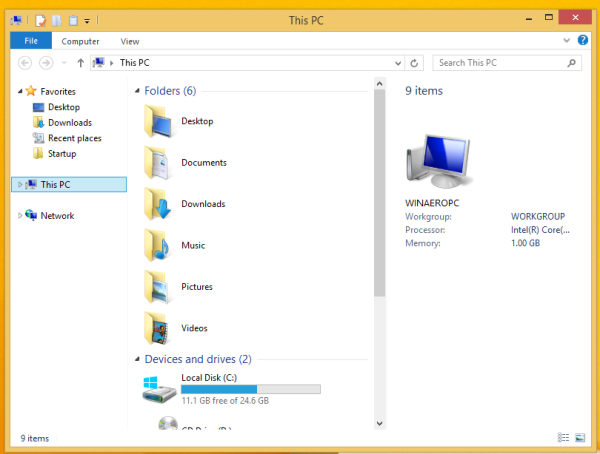
To show it again, press the Ctrl + F1 shortcut once again.
Alternatively, you can minimize it with the mouse. Click the small arrow in the top right corner of the Explorer window, to minimize or show the Ribbon. Or you can simply double click on any of the Ribbon tabs to minimize it, and double click again to restore it. In the minimized state, you can use the Ribbon like a menu bar, where it will revert to its minimized state after you click a command.
Using a Group Policy tweak, you can force Explorer to always start with the Ribbon minimized.
Press Win + R keys together on your keyboard. The Run box will appear. Type the following in the Run box and then press Enter:
gpedit.msc
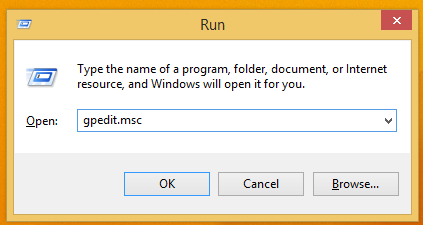
In the left pane of Group Policy Editor, navigate to the following path:
User Configuration \ Administrative Templates \ Windows Components \ File Explorer
Now locate the setting called Start File Explorer with Ribbon minimized in the right pane and double click it.
The policy configuration window will open.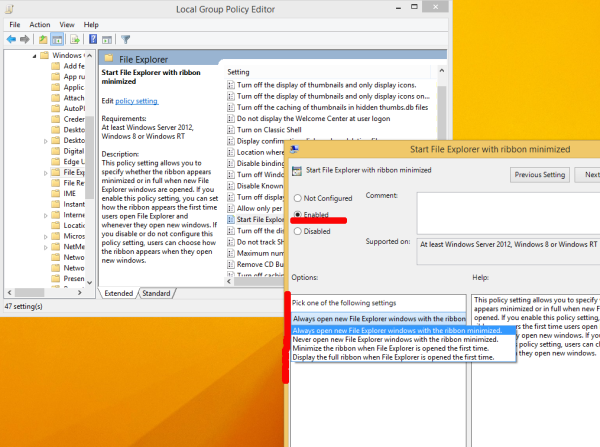
Set it to the Enabled state and pick the option below it which is suitable for you.
This setting can also be set via Registry editing.
- Open Registry Editor (see how).
- Go to the following key:
HKEY_CURRENT_USER\Software\Policies\Microsoft\Windows\Explorer
If this key does not exist, just create it.
Tip: You can access any desired Registry key with one click. - Create or modify the 32-bit DWORD value named ExplorerRibbonStartsMinimized. To start Explorer with the Ribbon always minimized, set the ExplorerRibbonStartsMinimized value data to 3.
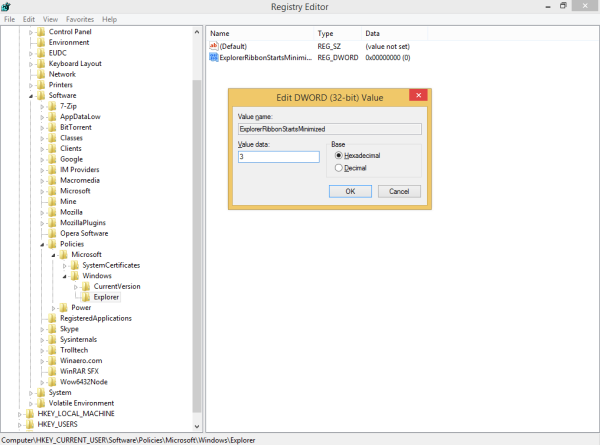
To start Explorer with the Ribbon always maximized, set it to 4. Delete the ExplorerRibbonStartsMinimized parameter to restore the default behavior.
If you don't want the Ribbon at all, you can completely get rid of it and get back the File Explorer look and feel similar to Windows 7 using my freeware, Ribbon Disabler.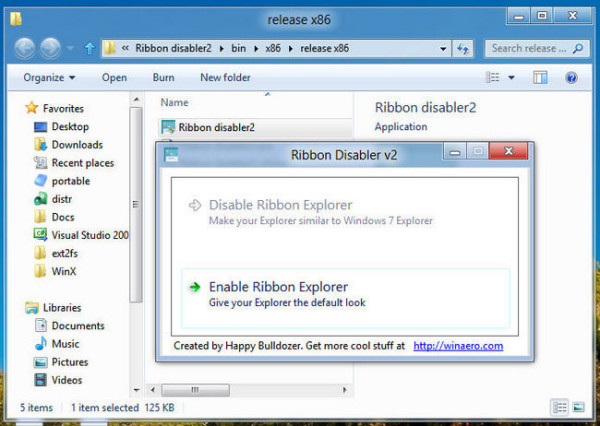
Ribbon Disabler allows you to enable and disable the Ribbon UI in File Explorer with just one click.
That's it. Now you can set up the Ribbon behavior according to your personal preferences. Additionally, you might be interested in the following tutorial: How to add any ribbon command to the Quick Access toolbar of File Explorer in Windows 8.1.
Even if you disable the Ribbon to save space, you can add the commands of your choice from the Ribbon to the context menu using this cool trick. So you don't need to keep the Ribbon enabled if you need just one or two commands from it. You can disable it and add those commands to the context menu.
Personally I prefer having all the commands I need on a simple toolbar such as the one added by Classic Shell, where can I also define custom commands such as Copy as Path.
Support us
Winaero greatly relies on your support. You can help the site keep bringing you interesting and useful content and software by using these options:
